Lately this Substack seems to be a solar phenomena appreciation publication. Well, so be it.
I’ll drop some photos here, but you’ve seen (and perhaps taken) some photos, so mainly I wanted to offer some reactions. We saw the show last night from the campus observatory of Michigan State University. Actually, I bicycled over a little after sunset and waited around. Pretty surroundings.
After the aurora began, we developed an impromptu group there because people kept trickling in. “Something important is happening in the sky - to the observatory!” And that’s one comment I wanted to make actually, that it’s nice for a community to have these natural gathering places. The observatory itself (as in, the telescope) was not used at all to see aurora, of course. So you might say one grass field is as good as any other. But this was a place people naturally gathered. Reminds me of an old Strong Towns comment to the effect that, if a revolution began in your city, would people know where to gather? A city should have places that, for historical reasons, or because of how they are used, or because of the layout of the city itself, are recognized as particularly important. Does your community have these natural gathering places?
You also noticed the added power in experiencing an event with a group, even a group of people you don’t know. A shared human experience even among strangers is powerful. We’re all humans together. After the lights began… I can’t quite say it was “speech stopping”, because some words were still coming out of mouths, but it entirely consisted of exclamations such as “wow”, “look at that”, “oh my God”, and such. Would have still been a remarkable event by yourself, but more powerful with a group.
And then, as to the lights themselves - one, so bright, especially at first. It brought to mind stories from the Carrington Event where the aurora were so bright people could read by them, or thought dawn was beginning. At times, it kept getting brighter and brighter and I wondered when it was going to stop, it was surreal.
And two… could talk about the difference between tacit and explicit knowledge. There is stuff you learn, and impressions you form, by experience, that are difficult to convey even by reading a well-written book (even by watching a video). We’ve all seen great photos of aurora, but for me, “how do they appear to the unaided eye”, and “how quickly do the patterns change” are two things I did not have a good feel for two days ago, and now I have an excellent feel for them, for I’ve seen it myself. Obvious implications for teaching in that comment too.
On the subject of teaching, I feel smart, instead of stupid, for building this event up for students ahead of time! (We looked at the producing sunspot through a telescope too.) Our predictions are imprecise, you never really know what these CMEs are going to do until they hit. I did tell people, this is the most intense aurora forecast I have ever seen. So I would have felt a little stupid, then, had nothing happened. But the skies did not disappoint.
And finally, on a personal note, perhaps our daughter learned a lesson. As we were waiting there for the final fading daylight to end, she was getting bored and wanted to go home. I said at one point, “sometimes in science you just have to show up, and maybe something happens, and maybe it doesn’t”. (And so also in life, someone on Twitter replied.) I’ve also been telling her a lot lately that it’s good to be bored sometimes, teaches you to be content even when the world isn’t stimulating you. But once the show began she didn’t want to leave. SEE, PAPA DOES KNOW BEST. :)
And finally, a few photos. SpaceWeather today is highlighting a good photo from the Florida Keys, and mentions a credible report from Puerto Rico. Remarkable. From East Lansing, Michigan:
THE END.
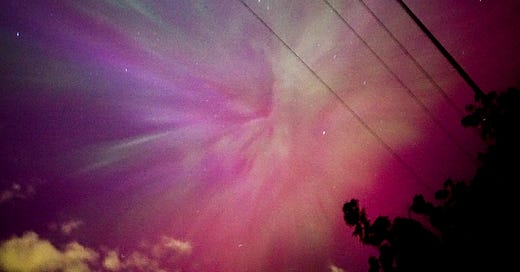


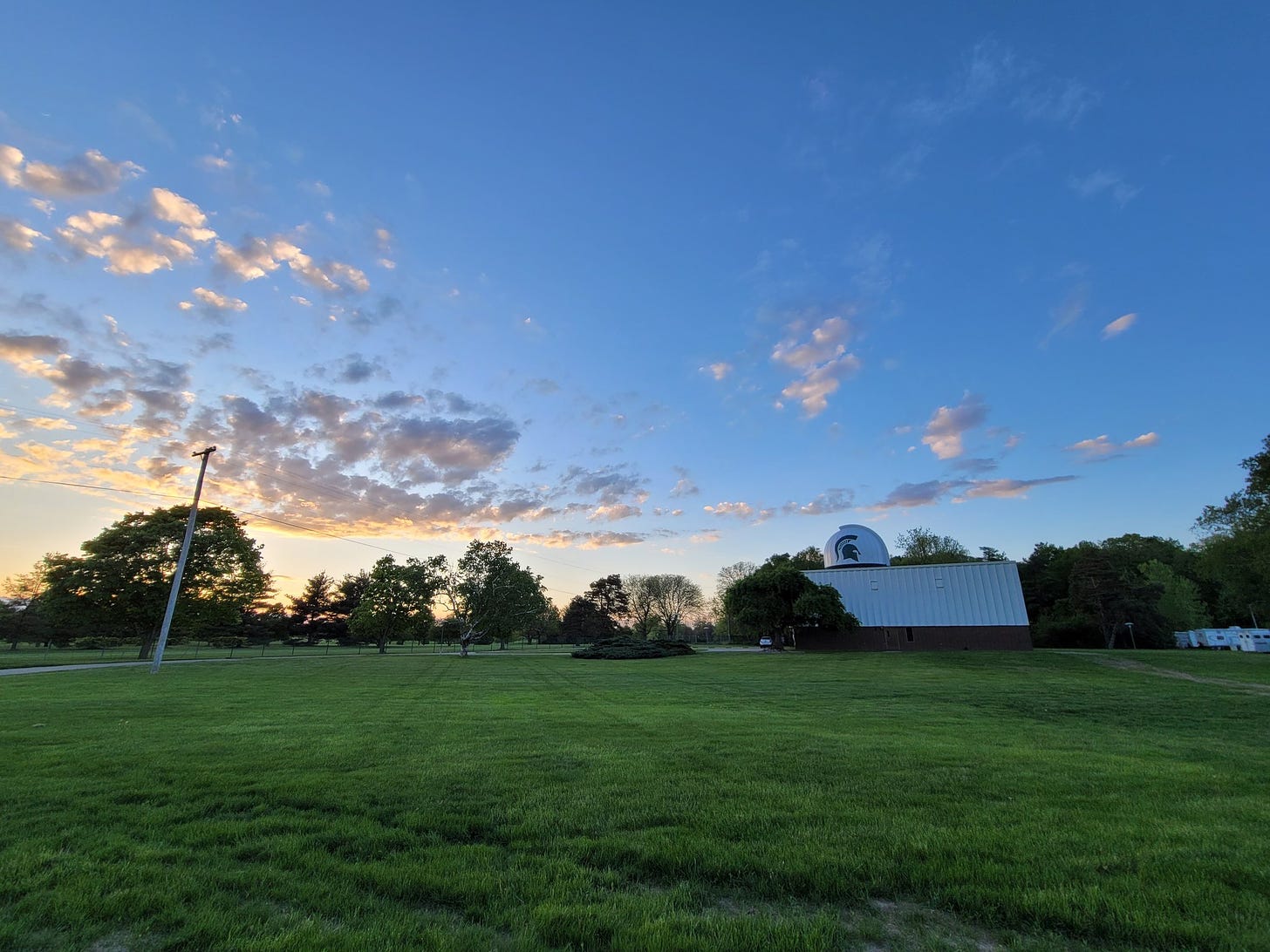

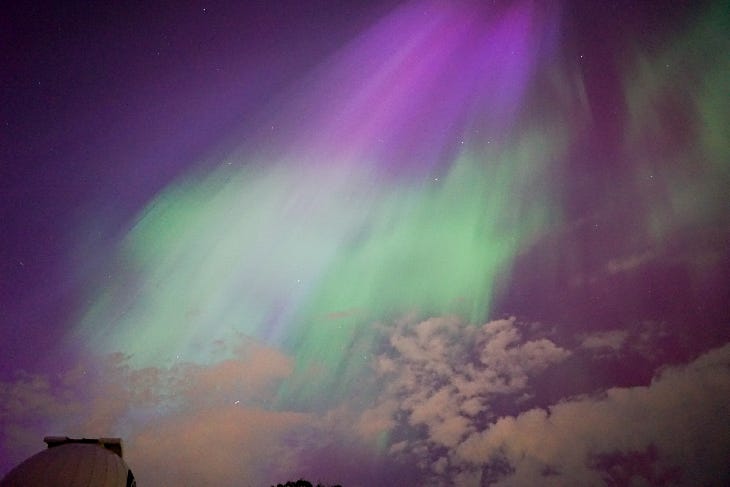
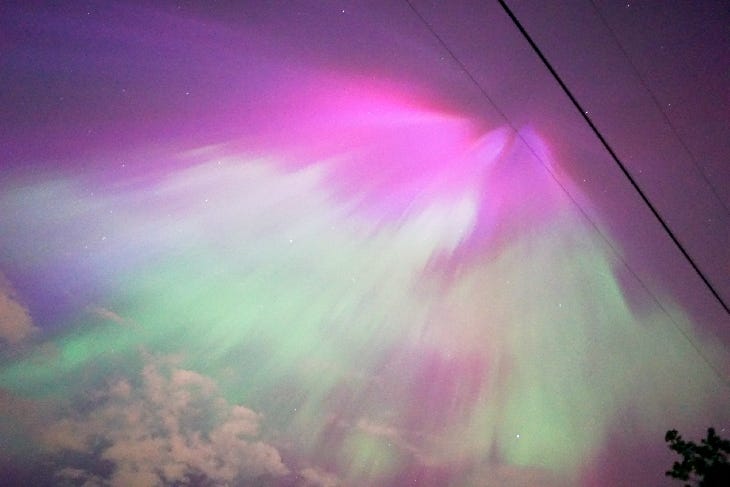
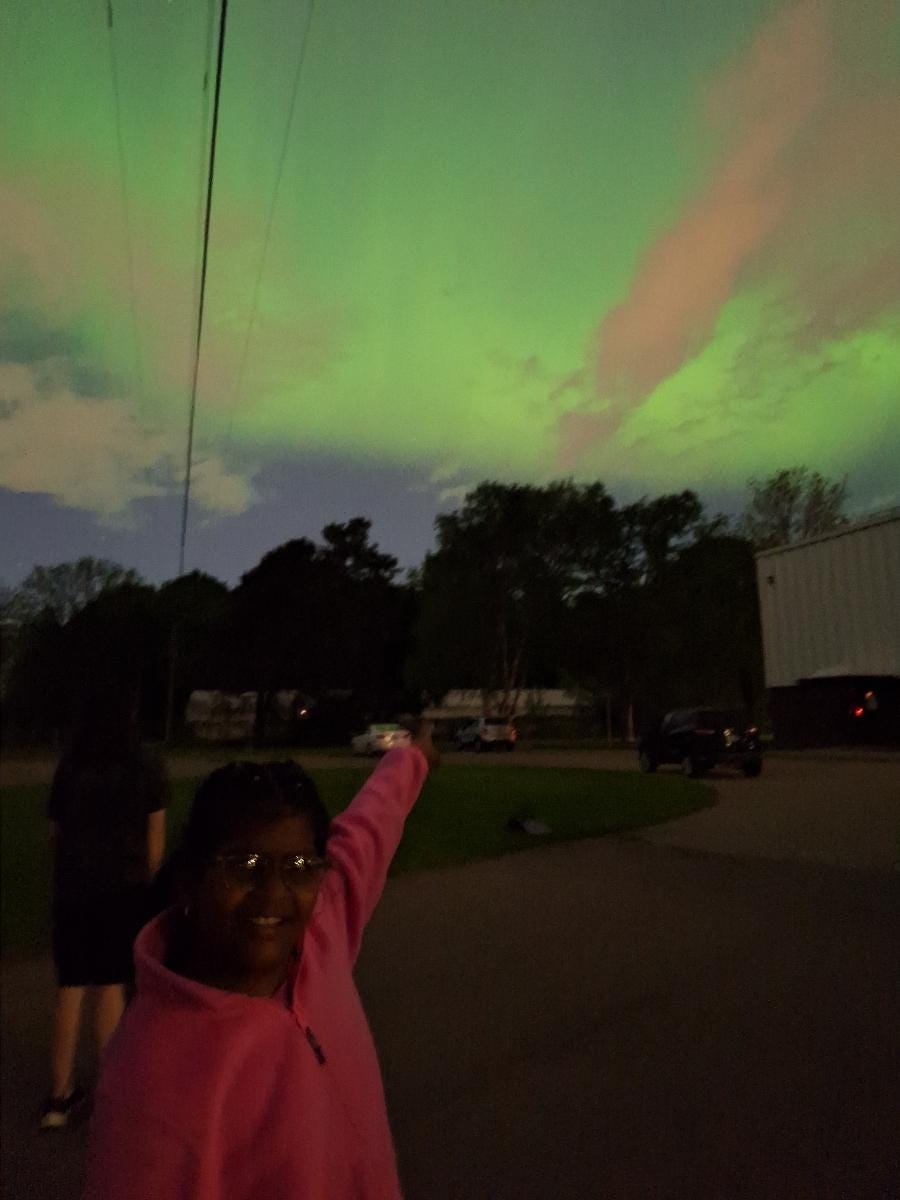
I'd seen videos and photos of the Northern Lights "dancing" but last night, it was more of a surge pattern. You could almost see the greenishness advance over the sky. Then it'd recede to close to nothing, but then there'd be another advance.